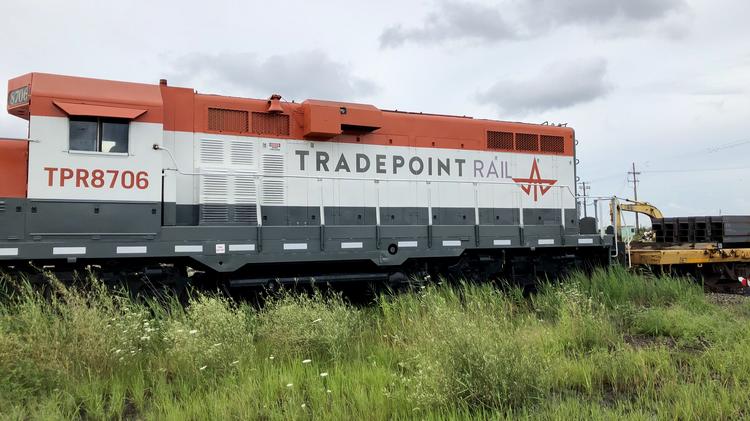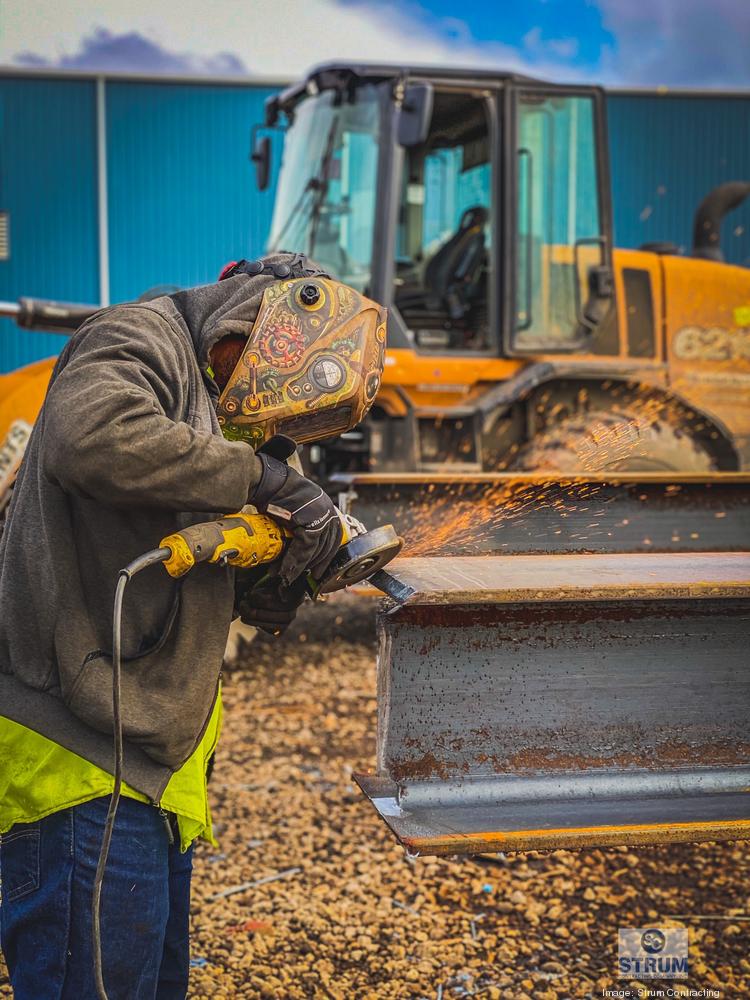
Posted on March 17, 2021
Offshore wind developer Ørsted is now one step closer to opening Maryland’s first offshore wind staging center — and potentially closer to sharing plans for a new steel manufacturing facility in the state.
The company announced Wednesday the completion of $13.2 million in port infrastructure upgrades at Tradepoint Atlantic, Baltimore County’s 3,300-acre former steel mill-turned-logistics center. The work, which involved driving steel pilings over 150 feet into the ground around the inner berth, leaves little to see above ground. But the investment was necessary to support the future handling of wind turbine components, some weighing as much as 2,000 tons.
In the years to come, the port’s strengthened ground-bearing capacity will allow heavy-lift cranes to move the parts from ships and onto an adjacent 50-acre staging center for lay down, storage and assembly. Ørsted will use the staging center in the development of its planned 120-megawatt wind farm Skipjack, set to be constructed nearly 20 miles off the coast of Ocean City.
However, the site could also someday be home to a steel fabrication plant, a development that would further ensure Tradepoint’s role as a national hub and supply chain leader for the offshore wind industry, which doesn’t yet have a large, physical footprint in the U.S.
Ørsted is required to invest in the construction of a steel manufacturing facility in Maryland — among other commitments — as part of an agreement with the Maryland Public Service Commission, which in 2017 gave Ørsted and another developer, U.S. Wind, approval to develop two wind energy areas off the coast of Ocean City.
So far, Ørsted has not made clear where such a facility might be constructed, though Brady Walker, Ørsted’s mid-Atlantic market manager, indicated a decision may soon be on its way.
“We have also committed to investing in some component marshaling facilities and a steel fabrication facility, and some of those scopes of work would take place at Tradepoint,” Walker said. “I can’t confirm right now what will and what won’t be there, but we will look to do that hopefully sometime in the relatively near future.”
Brady Walker, mid-Atlantic market manager for Ørsted. Heather Crowder
Walker’s comments come amid two other changes for the project. Ørsted recently gained control of the 50-acre staging center site from Tradepoint, which will allow the company to begin work on it. Additionally, the company announced in late February that the commercial operations date for Skipjack had been pushed back from 2022 to the second quarter of 2026. Walker said the revised schedule is meant to indicate that “the development is very much active, and that we are moving forward with plans to realize all of those commitments and all the associated benefits of the industry in the state, both in the Baltimore region, but also on the Eastern Shore and in the Ocean City area.”
“Now that we have really a clear path forward to delivering the project, I think you will start to see a lot of those decisions being made,” he added. “It’s really a function of the supply chain evolving and the project development timeline formalizing when we will make those decisions.”
Ørsted first announced its plans to develop the offshore wind staging center in partnership with Tradepoint Atlantic in July 2019 as a “first step of many to come,” officials said at the time.
The partnership has received praise from local and state leaders. Gov. Larry Hogan in a release Wednesday noted the role Tradepoint Atlantic and Ørsted are playing in helping the country move toward clean and renewable energy sources.
“Now is the time to invest in the kind of infrastructure that supports the development of new industries — like offshore wind — and the creation of thousands of new jobs,” he said.
The renewable energy industry, and offshore wind in particular, is poised for a period of growth with new support at the federal level coming from President Joe Biden’s administration. In his second week in office, the president signed an executive order setting a goal to double offshore wind production in 10 years.
At the local level, Maryland passed the Clean Energy Jobs Act in 2019 (though without Hogan’s signature) to expand the state’s offshore wind capacity by 1,200 megawatts, and last fall joined a multi-state agreement with Virginia and North Carolina to advance the offshore wind industry, its supply chain and workforce.
Ørsted too is playing a role in helping to develop the skilled workforce needed to stand up offshore wind projects in Maryland and beyond. The developer recently entered into a partnership with Maryland’s Maritime Institute of Technology and Graduate Studies to create offshore wind-related training for mariners.
The developer also brought on Baltimore-based Strum Contracting to provide steel welding services and assist with driving the pilings into Tradepoint’s inner berth. Strum hired its employees for the project from Jane Addams Resource Corp., a nonprofit workforce development organization in Baltimore’s Park Heights neighborhood that provides welding and computerized manufacturing training to unemployed or underemployed Marylanders, according to a release from Ørsted.
“Together with Tradepoint Atlantic, we are delivering on our promises to the State of Maryland and have literally laid the foundation of a growing offshore wind workforce and supply chain in the state,” said David Hardy, CEO of Ørsted Offshore North America, in a statement.








